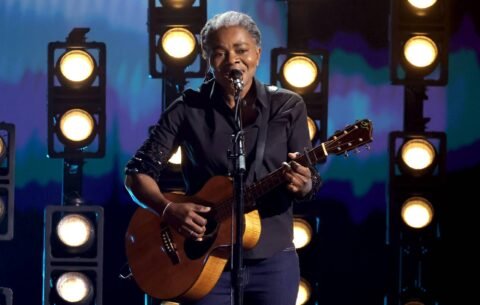G/W: What’s your connection to East Anglia?
G: I first came to East Anglia 30 years ago to sing in a live Radio 3 concert and immediately fell in love with Suffolk. The landscape, the light, the sense of peace. I came back year after year until I finally made it my home.
W: I used to visit family in Aldeburgh and was always drawn to the coast and the calmer pace of life here. When I finally moved over 20 years ago, it just felt right, as if I’d always belonged.
G/W: What’s the shared idea that links your two bodies of work at Snape Maltings?
Both: Our deep love of colour, nature, and especially the East Anglian landscape. It constantly feeds our creativity, and although we express it differently, our work feels like two sides of the same conversation.
W: Why is Snape the right setting for this exhibition?
W: Snape is the source of so much inspiration for us both. The Quay Gallery sits right among the landscape that’s reflected in our work, you can almost see the light and reed beds we paint and sculpt, just outside the window.
W: How do your practices “talk” to each other, clay texture with brushstroke and light?
W: We’re both searching for beauty and balance, though through very different means. His pots have this quiet strength and stillness, while my paintings are about movement and light. They meet in the middle, a kind of harmony between surface and spirit.
G: How did your time in Korea and Japan shape your approach to form, firing and glaze?
G: Korean and Japanese ceramics respond to nature in very different ways, one is decorative and deliberate, the other more understated and suggestive. I’ve taken inspiration from both traditions, always through my own lens. The forms are exquisite and technically demanding, which I love. Celadon and wood ash glazes feature strongly in my work; they echo the organic subtleties of the East Anglian landscape.
G: You’re largely self-taught; which masterclass created the biggest leap in your work?
G: A Japanese potter I studied with hardly spoke a word. Occasionally he would adjust my hands, and in that silence, I learned more than I ever expected. It taught me that understanding can be wordless, it’s about feeling, rhythm and intuition.
G: Reed beds are a constant inspiration. How do you translate that into surface and silhouette?
G: I literally use the reeds themselves, cutting them, dipping them in iron oxide or cobalt, and marking directly onto the clay. Sometimes I carve their impressions, sometimes I use the ashes from burnt reeds in my glazes. It’s a direct, tactile dialogue with the landscape.
G: Do you prefer wood, gas or electric firing for this series, and why?
G: I currently use an electric kiln, I work hard to achieve a less uniform, more natural surface. I’m also in the process of building a wood-fired kiln, which will bring an even stronger connection to the elements.
W: Painting from life can be unforgiving. What keeps you working en plein air?
W: Whether it’s a vase of flowers in my studio or the changing sky outside, I’m always chasing the light. Painting from life forces you to see honestly and work quickly, there’s no time to fuss. That immediacy brings energy and truth to a painting.
W: How has your background in illustration shaped your composition and sense of narrative?
W: It’s a blessing and a challenge. Illustration made me very precise, painting en plein air demands freedom. I’m learning to let go of control, to allow accidents, looseness, and emotion to guide the work.
W: Which East Anglian spot keeps drawing you back with new challenges?
W: Sutton Heath. It’s this wonderful blend of woodland and open heathland, changing constantly with the seasons. There’s always something new to discover there, a different light, a new rhythm of colour.
W: What’s the bravest decision you’ve made on a recent painting?
W: Knowing when to stop. The temptation is always to keep painting, however, sometimes the courage lies in walking away before you overwork it.
G/W: What does being part of East Anglia’s creative life mean to you both?
Both: East Anglia is such a nurturing place for creativity. Being a painter or potter can be solitary, so connecting with other artists and makers, seeing how they interpret the same landscape is endlessly rewarding.
G/W: What’s something people might be surprised to learn about you?
G: I was a professional opera singer for 30 years. Music taught me rhythm, patience, and the value of silence, all of which shape my pottery.
W: I’m passionate about theatre, and I listen to music every waking moment, especially while I paint. It keeps my energy flowing.
W: What’s one of the most important lessons you’ve learned creatively?
W: When I feel blocked, I keep moving. I play with materials, collage, or printmaking, anything that keeps the dialogue with creativity alive. Momentum matters more than perfection.
G: Who has had the biggest influence on your life?
G: My maternal grandparents. They were wise, gentle, and kind, and their love of craft and nature quietly shaped who I am.
W: What do you love most about East Anglia?
W: The food! We’re so lucky to have such brilliant restaurants, cafés and markets , it’s a feast for the senses.
G: What’s your favourite East Anglian landmark?
G: The Family of Man at Snape Maltings. Barbara Hepworth has always been one of my heroes. Standing by her sculpture, looking through to the reeds and sometimes seeing a marsh harrier, is pure magic.
W: Your specialist Mastermind subject?
W: Either the works of Van Gogh or Star Trek!
G: What’s always in your fridge?
G: White wine, kimchi and far too much cheese.
W: What’s your simple philosophy of life?
W: Enjoy the journey, wherever it takes you.
G: Your biggest indulgence?
G: Buying other potters’ work. I find it endlessly inspiring.
W: Favourite holiday destinations?
W: Kenya for the wildlife and adventure, Florence for the art, and Vienna for the music, all soul food in different ways.
G: When was the best day of your life?
G: Any day spent walking a Suffolk estuary with my dog.
G/W: Tell us something people don’t know about you.
G: I’ve learned to make rather good croissants!
W: I love printmaking, especially etching, and one day I’ll have my own etching shed again.
W: If visitors take one feeling away from your combined show, what should it be?
W: A sense of harmony, between materials, between people, and between art and the landscape that inspires it.
G/W: What’s next for you both after Snape? A new series, new collaborations, new terrains?
Both: We’re both part of two upcoming Christmas exhibitions, at Artspace in Woodbridge with Claire Fried and Louise Sant, and the Winter Exhibition at The George Farnham Gallery in Saxmundham.
G: I’d also like to experiment further with Korean decorative techniques.
W: And I’m transitioning from acrylic to oil painting, which opens new possibilities to capture Suffolk’s beauty in richer ways.
G/W: Finally, what would you most like readers to know?
G: Showing at Snape feels like bringing the work home, Snape’s light and landscape are part of every piece.
W: If you’re looking for something to lift the spirits, we’d love you to come and experience it for yourself. A visit to Snape is always special, but to see art and craft born of the same landscape within it is something truly memorable.
Website: garrymageeceramics.com
Instagram: @wendy.r.paints @gazmagee
Follow Gina Long @ginageelong




